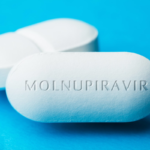Anemia and toddlers?

In children, lack of iron is the main cause of iron deficiency anemia, as it is necessary for the production of hemoglobin.
What is iron-deficiency anemia?
Iron deficiency anemia occurs when hemoglobin, which is found in red blood cells, is below a certain threshold. It can no longer transport enough oxygen to the organs and muscles, which affects their function. This is why anemia reduces physical stamina and interferes with brain development.
The causes of iron deficiency anemia?
Iron helps make red blood cells and carries oxygen in the blood. The main causes of lack of iron are a diet that does not contain enough iron, diseases that cause poor absorption of iron in the digestive tract, and iron loss due to bleeding from the digestive tract.
Other causes of anemia include bacterial or viral infections, certain genetic diseases, inflammatory diseases (eg: chronic juvenile arthritis), and certain chronic diseases (eg: renal failure with lack of erythropoietin, which is a factor in the growth of red blood cells). Cancers of the bone marrow can also cause anemia because they decrease the number of red blood cells or change their quality.
How to treat iron-deficiency anemia?
To determine if your child has anemia, a blood test is necessary. This blood test aims to measure the amount of hemoglobin in his blood and find the causes of this anemia by assessing, for example, his iron stores. If the doctor thinks the anemia is caused by an infection or other disease, your child may order further check-ups.
When anemia is confirmed, it is important to treat it. Otherwise, the effects may be permanent. If the anemia is caused by not getting enough iron, the doctor will advise you on how to feed your child. Your toddler will also need to take iron supplements for a few months.
In the case of anemia caused by infection or chronic disease, treatment will be directed specifically to the infection or chronic disease. In some cases, it may be necessary to add an iron supplement to the treatment of infection or chronic disease.
How to prevent it?
Anemia caused by a lack of iron can be prevented by eating a varied and balanced diet that meets your iron requirements. From birth, breast milk or iron-fortified infant formula will help your baby meet her iron needs.
From the age of 6 months, introduce complementary foods rich in iron. In addition to iron-fortified baby cereals, Health Canada recommends giving your baby lean meats, poultry, fish, eggs, legumes, and tofu. Afterward, offer your child vegetables such as spinach, broccoli, Brussels sprouts, peas, and beans. Also, give her foods rich in vitamin C (eg, oranges, clementines, tomatoes, and peppers), as these will help her body absorb iron.
Some older children are very fond of milk and sometimes drink too much. They are then no longer hungry to eat other foods, including those rich in iron. If this is the case with your child, reduce the amount of milk he drinks. To prevent iron deficiency, the Canadian Pediatric Society recommends that children over 1 year of age not give more than 500 ml of milk per day. Even if his milk consumption does not affect your child’s appetite, consider offering him water, not just milk, when he is thirsty.
If your child is allergic to many iron-rich foods, see a nutritionist to make sure their specific diet is getting enough iron. If not, he will need to take iron supplements. You can also see a nutritionist at the CLSC if you think your child’s diet is not rich enough in iron.




